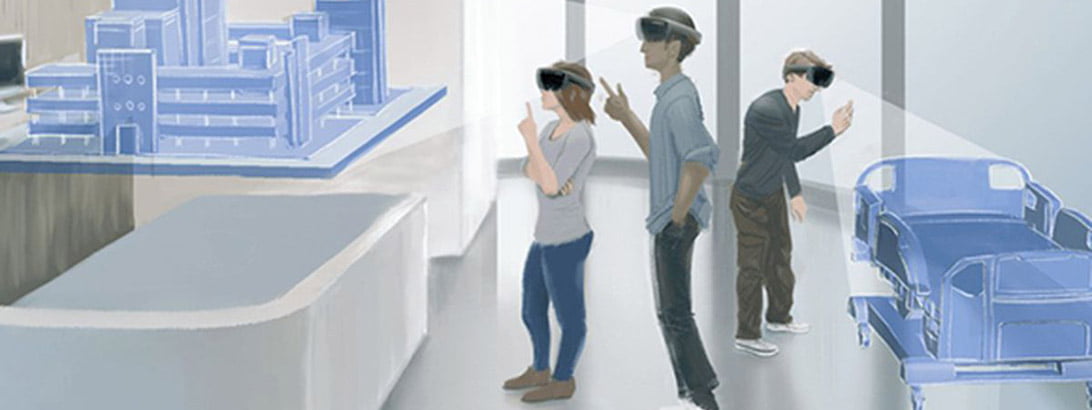When the South Niagara Hospital opens its doors in 2026, robots, 5G, blockchain and Internet of Things devices will be just a few tools in the tech box used to improve communications, automation and ultimately – patient care.
The facility, which will be located in Niagara Falls, Ont., is being designed with the next age of innovation in mind.
Backed by a solid technology plan, the hospital will serve a number of communities in the area.
Sime Pavlovic, chief information officer with Niagara Health, says “future-proofing” at the planning stage – all before a single shovel goes into the ground – is crucial in ensuring integration with current and future initiatives within the health-care network in the region, improving the patient experience and adapting to future trends.
“Technology plays a significant role in how we will provide patient care,” says Pavlovic. “We want to make sure we have the infrastructure in place to leverage whatever those technology-based opportunities are.”
Meanwhile, in alignment with the Ontario government’s health reform strategy, Niagara Health and 43 partner organizations in the region have applied to become an Ontario Health Team (OHT), health-care groups that include hospitals, homecare agencies, Meals on Wheels, universities and hospices.
“From a planning and design perspective, we have full awareness of the vision of the Ministry,” says Pavlovic of the new government direction. “We will continue to work with our community partners as our OHT evolves.”
Hospitals are complex, and re-conceptualizing their role demands a multilayered planning process.
“Hospitals aren’t just built for the next five years,” says Lydia Lee, national digital health lead and partner in advisory services at KPMG in Canada, which is supporting Niagara Health to create an information, communications and automation technology (ICAT) strategy. “They’re meant to last thirty to forty years and beyond.”
With extensive experience in health-care technology planning and hospital leadership, Lee and her team went beyond the initial ask, fostering big-picture thinking by asking key questions around how care, physical space and other factors would be incorporated in the hospital into the future.
They first took Niagara Health through KPMG’s Connected Health Framework, which helped Niagara “think about their role in the broader context of an integrated care system,” says Lee. “It offers a strategic checklist for them.”
That broad approach then led to conversations about virtual care and information flow between community partners.

A drawing depicting Niagara Health staff on a mixed-reality simulation to help them in the planning process of the new hospital – demonstrating the impact of technology in improving patient care.
“Tech can fundamentally change the way they deliver care,” says Lee. “It challenges the way we think about hospital facilities and the physical space.”
To further explore the importance of technology in designing physical spaces, KPMG brought in Finger Food Advanced Technology Group, a Vancouver-based custom technology solutions provider.
The company’s virtual design solution demonstrated the power of technology in visualizing the new facility – a big jump from the traditional process of mapping out a floor plan with cardboard cutouts and masking tape in open warehouses.
“We’re moving away from looking at blueprints and trying to imagine spaces,” says Hunter Smith, Finger Food’s chief operating officer.
Using mixed reality headsets, Niagara Health executives and staff virtually “walked” through an example of site-specific areas, such as a high acuity care unit, an operating room and hallways.
Through this activity, they got a sense of how users can collaborate on the design of a physical space and test out workflows. Instead of simply imagining spaces, they could add virtual nurses around a bed and move equipment around with simple hand gestures and finger clicks.
The feedback ensures everyone gets a hospital that works for them. “It’s all about collaboration and consensus building,” says Smith.
As a result, Niagara Health is now assessing how to include virtual reality in their design development process.
KPMG then proposed specific tech tools for Niagara Health to consider, such as smart environmental controls, which not only allow specific units to tailor temperature and humidity levels but also saves energy and money.
It also suggested a digitalized parking system whereby, in the future, through the recently launched Niagara Health Navigator App, a patient could reserve a spot and pay for it before they even leave home. Upon arrival, staff would then be alerted that the patient has arrived for the appointment.
“Embracing technology on this fundamental level isn’t about making a new hospital with more bells and whistles: tech should trigger efficiency and money savings,” says Pavlovic.
“When we automate some aspects of our services and use technology as an enabler, we let staff focus on providing extraordinary care in our efforts to build a healthier Niagara,” he says. “We want to create a seamless integration of technology, one that supports high–quality health care, where technology recedes into the background so patients can focus on recovering and healing.”
Increased efficiencies empower patients with more control over their care, he explains. For example, online appointment bookings, patient and caregiver access to patient records at Niagara Health and other regional providers, and a decrease in paper allow greater interaction time between patients and caregivers.
In 2013, Niagara Health opened a hospital in St. Catharines that embraced the latest technology, but since then, so much has changed, notes Pavlovic. The new facility in Niagara Falls will take it to the next level and ideally, stay cutting-edge well into the future.
“Our partners are bringing us different perspectives,” says Pavlovic. “It’s a lot of work, but it’s a great opportunity. We have to plan for what we know – and to be flexible in order to adjust for what the future will bring.”
Original article:
https://www.theglobeandmail.com/business/adv/article-niagara-health-thinks-beyond-the-walls-for-design-of-new-south-niagara/?utm_source=facebook.com



